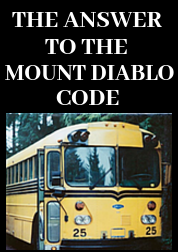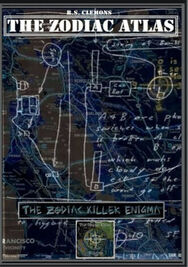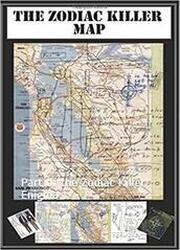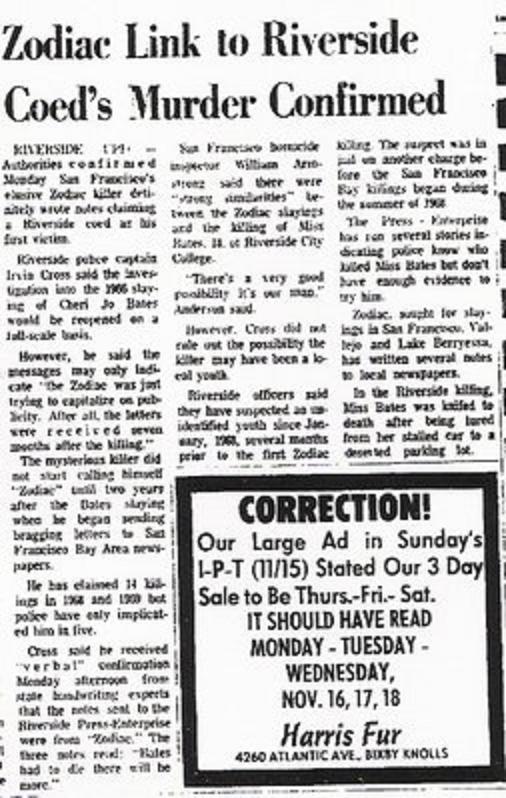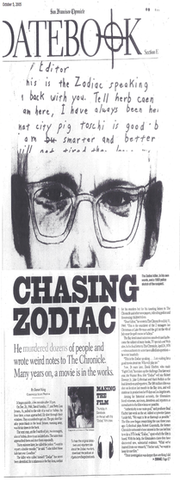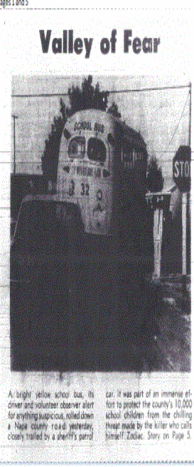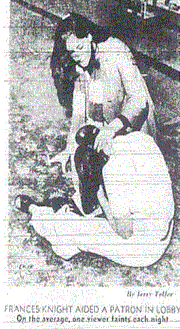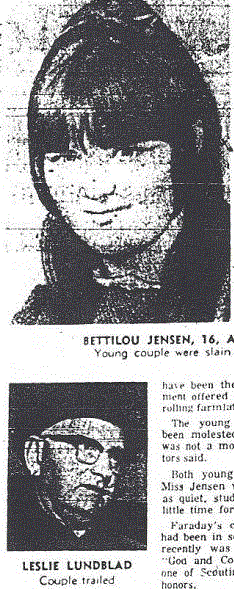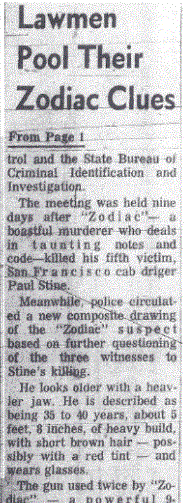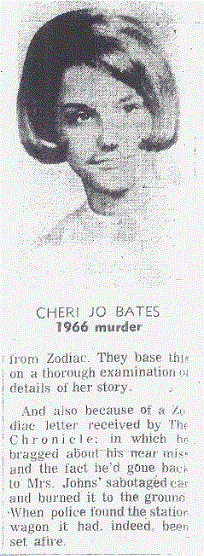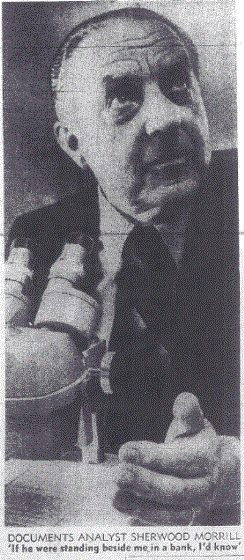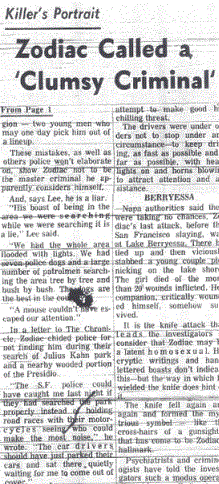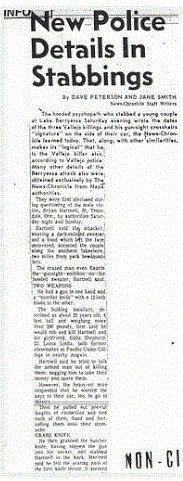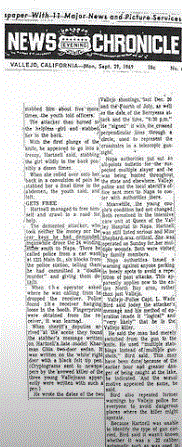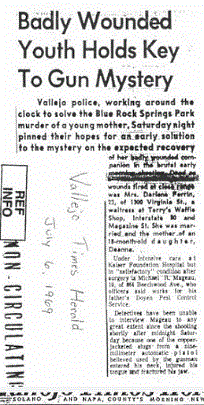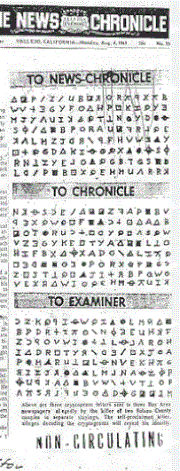
Some have wondered whether the couple were followed to Lake Berryessa, hence the killer's ability to connect the victims to the correct vehicle.
According to Ken Narlow in the 2007 Zodiac documentary "There's a lot of activity up at Lake Berryessa during the summer months, but after Labor Day when all the kids go back to school it kind of quiets down. This was September 27th probably 3 and a half weeks after labor day, so it was a very, very quiet Saturday evening out there". Therefore, the ability to connect a vehicle to its owners wouldn't have been that difficult for a killer able to construct ciphers.
According to page 11 of the police report "Miss Marilyn Denise, a student at Pacific Union College, stated that about 5.15 pm Saturday 9/27/69 she was in the Lake Berryessa area with a male companion. She stated at this time they were parked on the Knoxville Road approximately one mile south of the Lake Berryessa Marina. She stated shortly after they parked the vehicle they observed the victims who were known to them, Bryan Hartnell and Cecelia Shepard, driving south on Knoxville Road in Bryan's white Karmann Ghia. She stated as the Hartnell vehicle drove by, Bryan waved out of the window and said "Hi John", referring to her companion".
It is clear from this statement that Bryan Hartnell and Cecelia Shepard would have parked up by 5:30 pm. Had the killer parked behind them shortly after, with the intention of trailing them to the edge of the lake, we would have to assume there was an approximate 40 minute delay before he first made contact with the couple. But, had the killer ever parked his vehicle to the rear of the Karmann Ghia, by the stile? The killer may have parked 0.8 miles north of the crime scene, hence the two sightings before and after the attack on Bryan Hartnell and Cecelia Shepard. It is perfectly conceivable he was traversing the hillside looking for vehicles and victims, rather than driving directly to this parking area. This may explain his confusion regarding the distance he stated in the later payphone call to police dispatcher Dave Slaight.
 Dave Slaight
Dave Slaight It is extremely likely the killer wore gloves during the attack, as mentioned in the police report - so it would have been rather a strange decision to then drive 27 miles to Main Street and handle the telephone receiver with bare hands. "At 20:50 hours Reporting Officer met Eric Ronback and Reserve Officer Donald Stanley at the Napa Car Wash, Main and Clinton Streets, They stated that they had secured the scene and the area around the phone had been searched for physical evidence. The phone booth was then processed for latent impressions and latent impression lifts #1 thru 35 were taken into evidence. Heavy beads of moisture remained on the impressions photographed".
The Zodiac Killer was almost certainly right-handed, as he had holstered his gun on the right side during the attack on the young couple. Had these been the payphone prints of the killer, then they could have confirmed a right-handed assailant. Although not beyond argument, a right-handed killer would likely handle the telephone receiver with his left hand while dialing with his right. The four fingers of the left hand on the top side of the receiver. In the case of a left-handed person holding the receiver with their right hand, the four finger impressions would be on the opposite side of the receiver. If the killer was wearing leather gloves, this may still have opened up the possibility of confidently tying together this crime with the attacks at Blue Rock Springs and Presidio Heights.
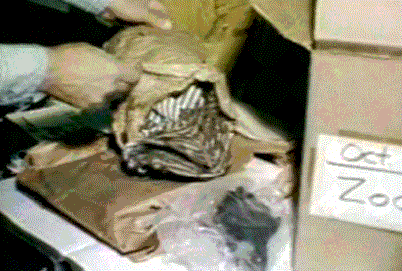
Assuming the physical evidence was retained from Presidio Heights, it shouldn't have been that difficult to detect any traces of airplane cement had the Zodiac used such a defense. "Many criminals often wear gloves to avoid leaving fingerprints, which makes the crime investigation more difficult. Although the gloves act as a protective covering for the wearer's prints, the gloves themselves can leave prints that are just as unique as human fingerprints, thus betraying the wearer. After collecting glove prints, law enforcement can then match them to gloves that they have collected as evidence as well as glove prints retrieved from other crime scenes. In earlier decades, investigators would dust for fingerprints only to find smears and smudges caused by gloves. Often in earlier decades these smudges were ignored because very little of their detail was retrievable. With the advent of latent fingerprint detection in the late 20th century, investigators started to collect, analyze, and record prints left at crime scenes that were created by the wearing of gloves. Glove prints can be as simple as marks caused by seams or folds in fabric of a glove, or they can be as complex as marks left behind by the grain or texture of the fabric of a glove. When gloves are collected as evidence their prints can be taken and compared to glove prints that were taken at crime scenes or from evidence.
Over time, the pores and grain of leather gloves will pick up dirt and grease from surfaces that they have touched or handled. The dirt and grease can in return help to create prints on surfaces. Also, unlined gloves provide the most dexterity but can over time become saturated with the oils and sweat of the wearer's hands. This helps to increase the gripping properties of the gloves but causes the gloves to leave prints. A print that contains the glove wearer's sweat and oils will contain their DNA, which can incriminate them." Wikipedia.
With the 50th anniversary of the Lake Herman Road murders fast approaching, can another form of fingerprint evidence finally snare the Zodiac Killer - or are we heading to an irrevocable dead end?




 RSS Feed
RSS Feed

